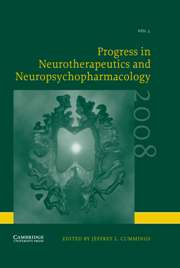No CrossRef data available.
Article contents
The Argatroban and tPA Stroke Study
Published online by Cambridge University Press: 27 November 2007
Extract
ABSTRACT
Background: The benefit of intravenous recombinant tissue plasminogen activator (rtPA) in acute ischemic stroke is related to clot lysis and arterial recanalization. Argatroban is a direct thrombin inhibitor that safely augments the benefit of rtPA in animal stroke models. However, human data on this combination are limited. Design: We report an update of the Argatroban tPA Stroke Study, an ongoing prospective, open-label, dose escalation, safety, and activity study of argatroban and rtPA in patients with ischemic stroke. The primary outcome was incidence of intracerebral hemorrhage; secondary outcome, complete recanalization at 2 h. After standard dose intravenous rtPA administration, a 100-μg/kg bolus of argatroban followed by infusion of 1 μg/kg per min for 48 h was adjusted to a target partial thromboplastin time of 1.75 times baseline. Results: Twenty patients with middle cerebral artery occlusions (including 13 men) have been enrolled, with a mean ± SD age of 61 ± 13 years. Baseline median National Institute of Health Stroke Scale score was 12.5 (range, 3–25). The mean ± SD time from symptom onset to argatroban bolus administration was 177 ± 56 min. Symptomatic intracerebral hemorrhage occurred in 2 patients, including 1 with parenchymal hemorrhage type 2. Asymptomatic bleeding occurred in 2 patients and there was 1 death. Recanalization was complete in 7 patients and partial in another 7, and reocclusion occurred in 4 within 2 h of rtPA bolus administration. Conclusion: The combination of low-dose argatroban and intravenous rtPA may be safe, and produce faster and more complete recanalization, but a larger cohort of patients is required to confirm this pilot study.
- Type
- Research Article
- Information
- Progress in Neurotherapeutics and Neuropsychopharmacology , Volume 3 , Issue 1 , January 2008 , pp. 35 - 47
- Copyright
- © 2008 Cambridge University Press


